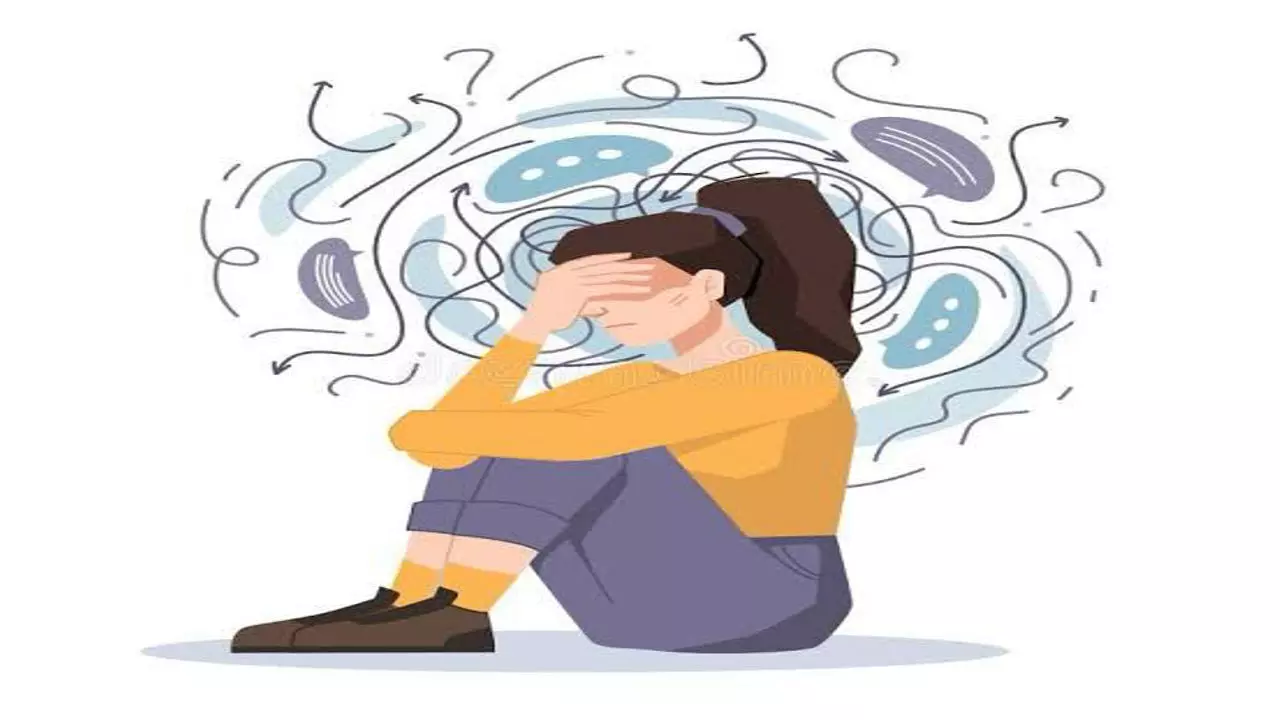TRENDING TAGS :
Newstrack Special: Do you also have a fear of something? Learn about phobia, its symptoms, and effects.
A phobia is a mental disorder in which a person experiences intense, irrational, and abnormal fear of a specific object, situation, or activity.
A phobia can be a serious mental condition, but with proper treatment and counseling, it can be managed.
A phobia is a mental disorder in which a person experiences intense, irrational, and abnormal fear of a specific object, situation, or activity. This fear is excessive compared to the actual danger and can significantly impact a person’s thoughts, behavior, and daily life. It is not limited to normal fear but can sometimes interfere with social, personal, and professional life. Phobias can cause unnecessary stress, anxiety, and panic, affecting mental health.
Phobias can be of various types, such as fear of a specific object (Monophobia), fear of social situations (Social Phobia), or fear of unexpected experiences (Agoraphobia). With proper treatment and therapy, it can be managed, allowing individuals to lead a normal life.
What is Phobia?
A phobia is a type of anxiety disorder in which a person experiences extreme and abnormal fear (excessive dread) of a specific object, situation, person, or activity. This fear is often excessive and irrational compared to the actual threat, but the person feels unable to control it.
Phobia is not just a normal fear but can be a serious mental condition that affects daily routine, social life, and mental health. When a person encounters a situation they fear, their body and brain show an intense stress response (fight or flight response), leading to symptoms like panic, sweating, rapid heartbeat, difficulty breathing, and dizziness.
Types of Phobias
Phobias are mainly classified into three types:
1. Specific Phobia
This refers to fear associated with a specific object, animal, or situation. Some common examples are:
• Acrophobia – Fear of heights
• Claustrophobia – Fear of confined spaces
• Arachnophobia – Fear of spiders
• Ophidiophobia – Fear of snakes
• Trypophobia – Fear of clusters of small holes or patterns
• Aerophobia – Fear of flying
• Hydrophobia – Fear of water
2. Social Phobia (Social Anxiety Disorder)
A person with this phobia experiences extreme fear and nervousness in social situations, such as talking to people, attending crowded places, or speaking in public. Due to this fear, individuals tend to avoid social gatherings and feel isolated.
3. Agoraphobia
This type of phobia involves fear of open spaces, crowded areas, or public places. It can be a severe mental condition that may compel a person to remain confined at home.
Monophobia
Monophobia, also known as the fear of being alone or loneliness phobia, is a type of anxiety disorder where a person experiences extreme fear of being alone, traveling alone, or being without support.
Causes of Phobia
Phobias can develop due to various biological, psychological, and environmental factors. Childhood experiences, family background, and mental health also play a role in their development.
1. Traumatic Experience
A frightening or traumatic event in childhood can later develop into a phobia. Examples:
• A child bitten by a dog may develop Cynophobia (fear of dogs).
• A person who has experienced drowning may develop Hydrophobia (fear of water).
2. Genetic Factors
Phobias can sometimes run in families. If a parent has a specific phobia, their children are more likely to develop the same fear.
Example: If a parent has social phobia, their child may also develop fear of crowds or talking to people. Studies suggest that genes controlling fear response in the brain may contribute to phobias.
3. Brain Chemistry Imbalance
Certain chemicals (neurotransmitters) in the brain, such as serotonin and dopamine, play a role in anxiety and fear responses. An imbalance in these chemicals can increase anxiety and fear.
The amygdala, a part of the brain responsible for controlling emotions and fear, can become overactive, causing intense fear even in normal situations.
4. Learned Behavior
Children can adopt fears by observing parents, siblings, or close individuals. If parents fear animals, darkness, or enclosed spaces, children may also develop the same fears. This process is called observational learning, where we adopt behaviors by watching others.
5. Environmental Factors
• Accidents – A severe accident can develop into a phobia, such as a fear of driving after a road accident.
• Childhood Neglect – Lack of love, security, and proper guidance in childhood increases the risk of developing phobias.
• Overprotective Parenting – Parents who shield their children from risks excessively may unknowingly cause phobias in them.
6. Deep Anxiety and Stress
Long-term anxiety and stress can lead to phobias. Highly anxious people may develop fear of new or unknown situations. Negative thinking and constantly perceiving danger can gradually transform into a phobia.
7. Biological Response
Some people are biologically more sensitive to fear. Scientists believe phobias may be part of evolutionary survival mechanisms.
Example:
Our ancestors feared snakes, spiders, and heights for survival, which is why many people naturally have these fears today.
Symptoms of Phobia
Symptoms of phobia can vary from person to person, but common symptoms include:
Physical Symptoms
• Rapid heartbeat (Heart Palpitations)
• Difficulty breathing
• Excessive sweating
• Dizziness or feeling faint
• Sudden chills or heat sensations
Psychological Symptoms
• Intense anxiety and stress
• Avoidance of specific objects or situations
• Fear interfering with daily activities
• Feeling out of control or fear of going insane
Diagnosis of Phobia
To diagnose a phobia, a mental health professional analyzes a person’s symptoms, experiences, and history. Common diagnostic methods include:
• Psychological Evaluation – Assessing mental health and fears.
• Detailed Interview – Discussing personal fears and experiences.
• Questionnaire – Filling out forms to assess fear levels.
Treatment of Phobia
Phobias are treatable, and several psychological techniques help in managing them effectively.
1. Cognitive Behavioral Therapy (CBT)
In this therapy, the person is gradually exposed to their fear and taught to replace negative thinking with positive thoughts.
2. Exposure Therapy
This involves gradually exposing a person to their fear so they can learn to cope with it.
3. Medications
• Anti-Anxiety Drugs – Help reduce panic and anxiety.
• Beta-Blockers – Control heart rate and sweating.
• Antidepressants – Help balance mood and emotions.
4. Mindfulness and Relaxation Techniques
Practices like yoga, meditation, and deep breathing help in reducing anxiety and overcoming phobias.
By understanding and addressing phobias, individuals can take control of their fears and live a balanced life. With proper therapy, support, and medication, phobias can be effectively managed.


